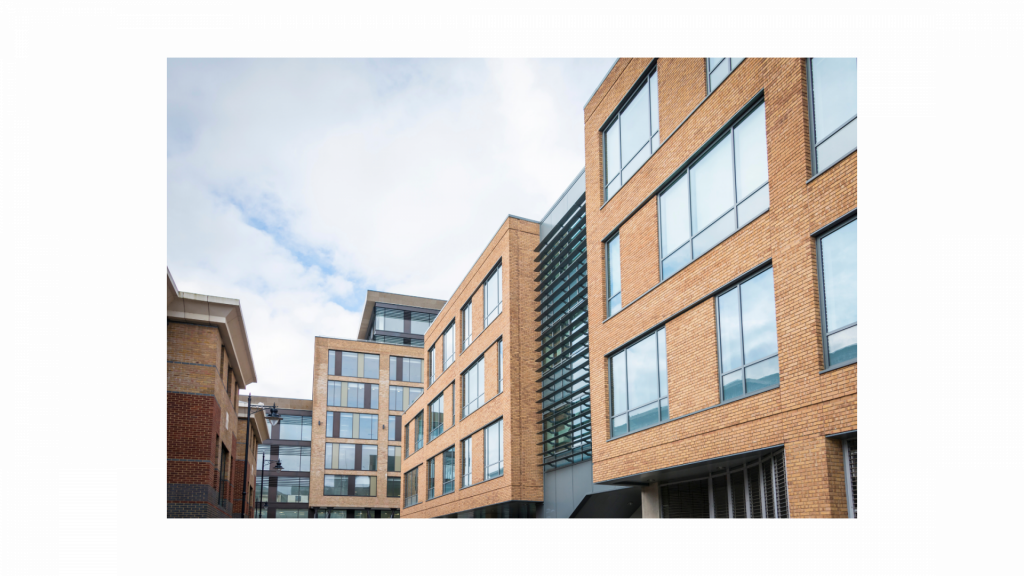Just like in school, you wanted to get an A, sometimes you’d settle for a B, rarely would you(or your parents0 accept a C. The same is true for building classifications. Most tenants would prefer an A, but not everyone can get the best and most popular spaces.CLASS C is usually the oldest, smallest, least efficient, poorly located and often poorly maintained. Small businesses often start in the businessman’s home and then graduate to an old CLASS C office building, often in the Central Business District (or a Flex building in the suburbs. They are the buildings which are generally ready to move into with space previously built out by the owner for previous tenants; hence the lowest rents. Older buildings have inefficient HVAC systems and odd sized floor plates (you will see in our discussion of CLASS A buildings they are the most important considerations). After their first lease expires and their business grows, usually one to three years, they ‘graduate’ to a CLASS B building.
CLASS B buildings, as you properly explained, are usually a little newer and a little larger. In the Wilmington office market, the CLASS C buildings are usually pre-1960 and often times walk-ups or over retail stores. CLASS B are usually developed between 1960 and 1984. The floor sizes might be +/- 10,000 sq ft and they have elevators which work, Rest Rooms which are ‘dated’ and HVAC systems which are not real efficient. Often times the buildings were constructed with several columns spaced around the floor, maybe spaced every 13′ to 18′ which makes a difficult time laying out offices. These leases are usually in three to five-year terms. Assuming that the business in the CLASS B building is growing and making more money, at the end of their term they are actively pursued by owners and real estate agents of the CLASS A buildings.
CLASS A buildings, that started to be developed in the eighties benefited from noticeable advancements in the industry. Developers learned how to make larger floor plates, and with that ways to support ceilings with fewer columns throughout each floor. The other major improvement was bigger. Better, more efficient HVAC systems. Larger capacity systems with smaller zones which allowed the tenants to control their own temperature within the suite. Many other things took place in this growth spurt, one of which was the non-opening windows. Landlords could now control the use of heat and air conditioning. No more opening the windows and then cranking up the heat and air conditioning, all benefiting the owner. The larger floor plate meant the owner could entice the larger tenants and promise them they could have most of or all of a floor. Tenants liked being the only tenant on a floor. The ‘world’ of financing also loosened up a little in this time frame. Landlords could finance money for marketing above and beyond the actual cost of construction. That being said owners could compete with other buildings by offering rent discounts, free rent and extra tenant improvements. As long as the owner could pre-lease a portion of the building (usually 50%) the bank would be aggressive in their loans. Many would actually lend to the owner/developer money above the actual cost of constructing the building. Sometimes as much as 20 or 25 percent above their cost of construction, and certainly noticeably above their out of pocket investment (equity) in the development. Builders were making money on what they borrowed and later on what they leased.
The office development industry got very quiet with the beginning of the recession, crash of the real estate market in September 2008. Many markets are still digging out from that crash almost ten years ago. The big cities, such as Philadelphia, have come back with a vengeance, accompanied by retail and apartment/condo development. During that recession the businesses themselves were having a difficult time, so they weren’t growing and they were not in need of new or larger spaces. That is when all of the ‘cranes’ went away. They started returning in 2012 in some markets. Still, however, there was very little pure spec development. Remember the 50% pre-leasing the banks were requiring. As empty-nesters started retiring/moving to the cities, it generated retail, apartment and condo (both are included in the ‘multi-family’ description. More people, more support retail and shopping, more restaurants all lead to more demand for office buildings. That is why you are seeing the development in the urban marketplaces around the country.
All of the above explains why Tenant Representative brokers, and Landlord agents for that matter, have gotten more specialized and experienced in their specialties over the last 15 years or so. To be really good you have to know everything about the tenant and its needs. Some buildings seem to work for certain types of Tenant, medical and legal are good examples, and real estate agent became specialized as well. It is not uncommon for an experience commercial broker, who knows his market and the owners and buildings within that market, to encourage a Tenant client to pursue one building over another in their building search. We do not steer, but we do make sure that the Tenant is fully aware of all of the plusses and negatives of the buildings being considered; but not just the buildings themselves, some owners and some property management companies are better than others. Most recently, a Tenant I know became unhappy when he found there was little or no cell phone coverage in a building which was otherwise perfect. There are reasons, good and bad, that should be known when a Tenant/client is looking for his company’s next home.

